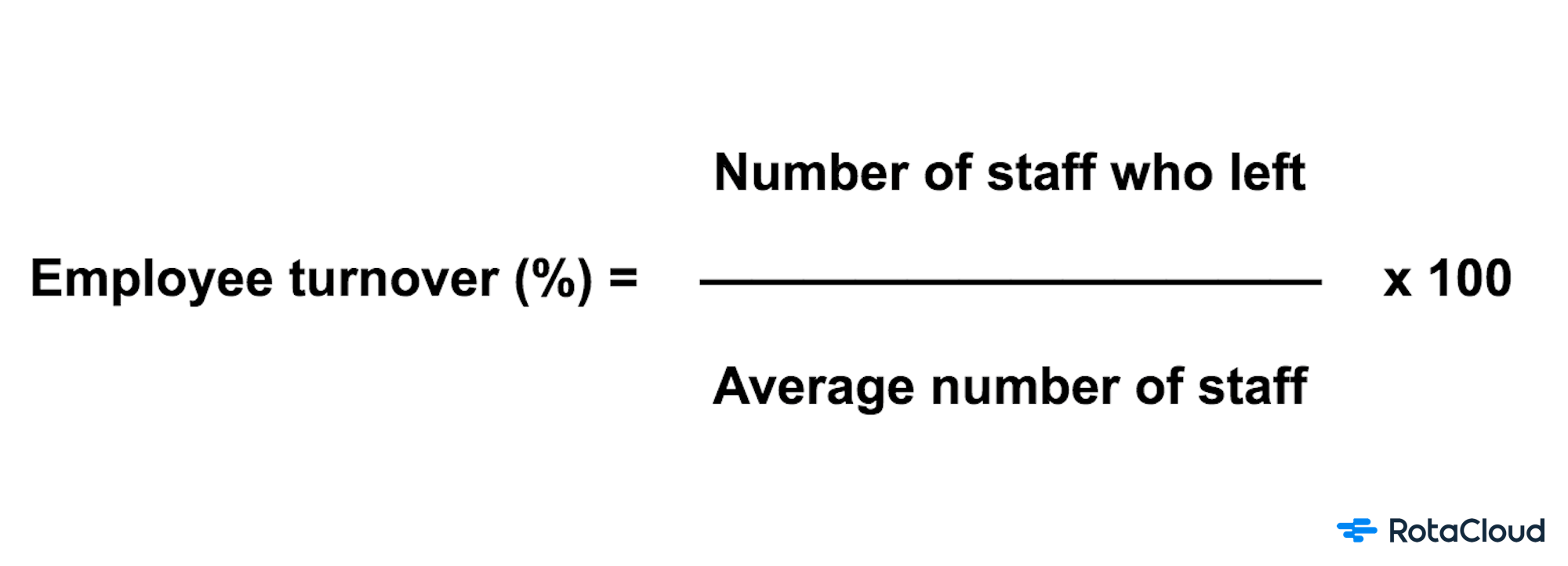Recruitment and training don't come cheap.
When you factor in the cost of advertising a role, time spent interviewing applicants, and the time it takes for new hires to get fully up to speed, for some industries it can apparently cost up to £30K to replace a single full-time employee.
It makes sense, then, not just to retain your employees for as long as possible but to keep close tabs on the staff turnover rate at your business.
Here's how to calculate labour turnover quickly and easily.
In a hurry? Skip to our staff turnover rate calculator
Why staff turnover matters
Some staff turnover is normal. Human resources body the CIPD puts the average rate of labour turnover (from 2022-2023) at 34% in the UK — a figure that has significantly risen since the 16% from their 2020 report.
Of course, staff (or labour) turnover rates differ from industry to industry. The hospitality industry, for instance, which experienced a major staffing shortage in 2021, sees employees coming and going much more frequently than, say, the public sector.
When looked at on a per-industry basis, however, staff turnover rates can be a good indication of the health of a business from an employee’s perspective: the longer the staff stick around, the more likely they're content in their roles and feel that they’re being compensated fairly.
By closely monitoring labour turnover rates over time, employers have an opportunity to spot trends early. From there, they can adjust things like staffing levels, pay, or even perks and benefits in order to stem the flow of leavers and potentially save thousands of pounds on recruitment and training.
So, how do you calculate staff (or labour) turnover?
Labour turnover formula
Calculating staff turnover at your business is easier than you might think.
Here’s the labour turnover formula:

To calculate the "average number of staff" at your business, simply add the number of staff you had at the start of the period you want to measure (e.g. the past week or month) to the number of staff you had at the end, then divide the answer by two.
For example, if you had 30 employees at the start of July and 24 employees at the end, your average number of staff for the month would be 27.
Next, take the number of staff who left your business in the same period and divide it by your average number of staff, then multiply the answer by 100 to get your staff turnover as a percentage.
For example:
If three staff left your business in July, and your average number of staff was 27, your staff turnover rate would be 11% (3 ÷ 27 x 100 = 11).
Don’t fancy doing the maths? (We don't blame you.) Use our free staff turnover calculator below.
Staff turnover rate calculator
N.b. To calculate "average number of staff" see instructions above.
Wrap-up
Recruitment can be both costly and time-consuming, so managers must keep a close eye on the staff turnover rate at their business.
Some staff turnover is normal, and it can be higher in some industries than others. But be sure to keep a log not only of the number of staff leaving your company but also the roles they work in and the departments they belong to.
If you're seeing high staff turnover in some areas of your business but not others, this could very well point to an internal issue that needs your urgent attention. Use this data to spot trends early and to help identify the most likely causes of staff wanting to leave your business.
Then, it's looking at what you can do to fix it...
Read next ➤

“Our staff retention is really high — a lot of our staff have been with us for five, six years or more.”
Find out how stopping split shifts and offering open shifts keeps hotel and restaurant Beck Hall's staff retention high and (as a result) customer experience exceptional.
Editor's Note: This post has been updated for accuracy in January 2024 and then April 2025.





